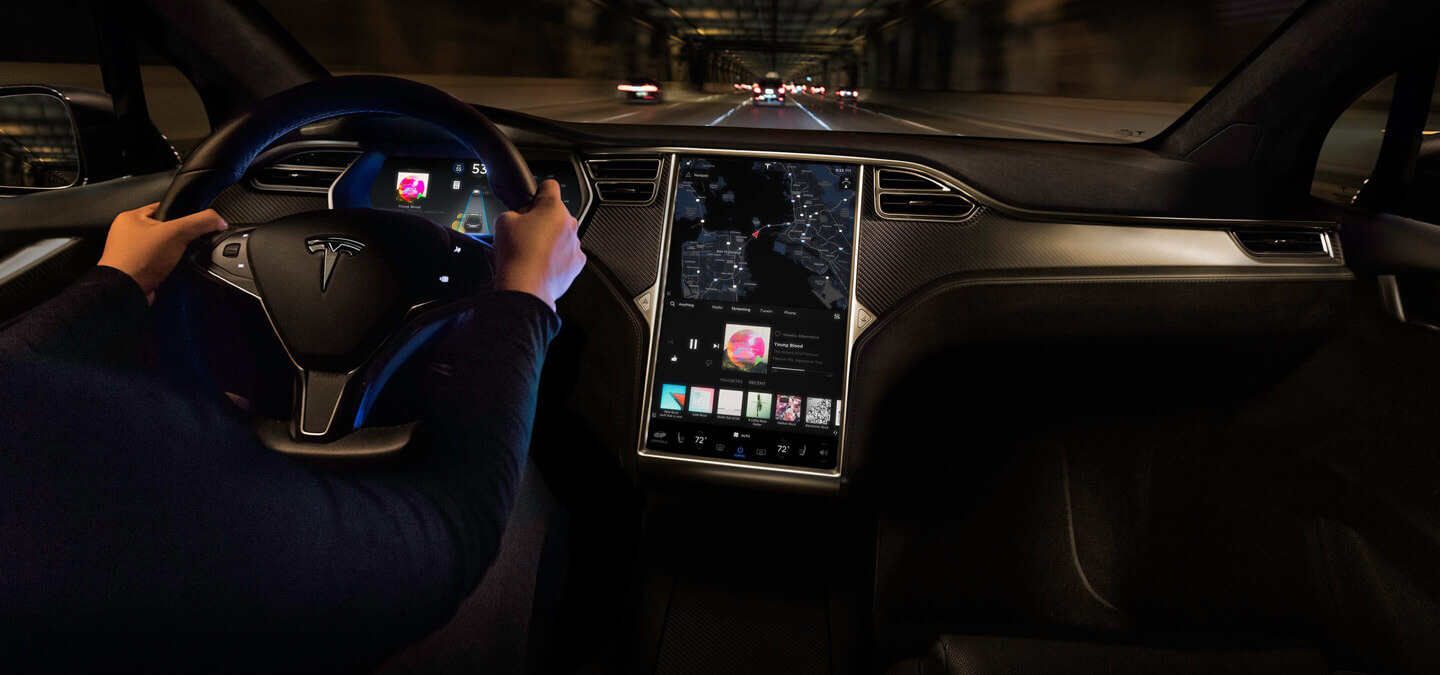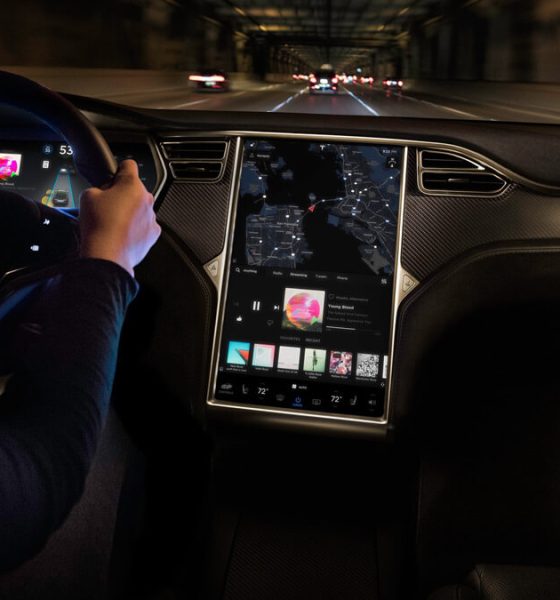

News
Tesla's Elon Musk shares MCU1 retrofit target timeframe, estimates $2k upgrade cost
Elon Musk has provided new details about Tesla’s Media Control Unit (MCU) retrofits for vehicles that are equipped with older infotainment systems. According to the CEO, MCU1 to MCU2 retrofits may start in a few months, though he does not personally recommend it, especially considering its estimated $2,000 cost. Musk has instead suggested that Tesla will release an update to older cars that can optimize the performance of their existing MCUs.
Musk’s recent statements were shared on Twitter while the CEO was interacting with Tesla owners, some of whom owned MCU1-equipped vehicles. The limitations of the older hardware have become more prominent over time, particularly as Tesla rolled out media-heavy features such as the Tesla Theater and the Tesla Arcade. Similar to older hardware in mobile devices, MCU1 vehicles have become slower compared to the company’s newer vehicles like the Raven Model S and X, as well as the Model 3.
Elon Musk has previously stated that MCU1 retrofits would be offered to owners whose vehicles are still equipped with older hardware. The CEO confirmed this following the initial rollout of MCU2 vehicles, and the idea was reiterated after the release of the company’s new Tesla Arcade titles. That being said, a number of Tesla owners have been informed by local service centers that an MCU1 to MCU2 retrofit was not possible.
For the uninitiated, Tesla’s MCU1 is equipped with an Nvidia Tegra 3 processor, which is capable but a tad slower than its newer sibling. Meanwhile, the MCU2 runs on an Intel Atom E800 series chip and comes with a faster browser. The unit also renders videos with sound, giving it the capability of running new features such as the Tesla Theater, which includes video streaming apps such as Netflix and YouTube, as well as video games in Tesla Arcade. All Tesla Model 3s run on MCU 2, as well as Model S and Model X units purchased after March 2018. Customers who bought their Model S and X prior to March 2018 use the MCU1.
Many Tesla owners whose vehicles are equipped with MCU1 have been clamoring for an update to avail of features only enjoyed by those using the newer system. Tesla has not left those on MCU1 in the dark and has rolled out several updates to improve the performance of the older infotainment systems. That being said, the gap between the actual capabilities of Tesla’s MCU1 hardware and its MCU2 features such are growing, and it has pretty much reached the point where the infotainment systems of older vehicles are significantly slower than those in newer cars.
In a way, Elon Musk’s recent statements hint that Tesla’s current priority is the rollout of its Hardware 3, which is essential for its Full Self-Driving initiatives. Retrofits for HW2.5 vehicles have already begun, and HW2 vehicles are expected to follow soon. HW3 is Tesla’s custom-designed computer that replaces the old Nvidia computer used for HW 2.5. As noted by Tesla during its Autonomy Day presentation, Hardware 3 was specifically built to achieve true Full Self-Driving capabilities and can enhance the electric car’s processing capability by as much as 1,000 percent.
Nevertheless, it would be wise for Tesla to start rolling out its MCU1 retrofits for older vehicles, even if it’s later than expected. Considering that Tesla owners have shown a willingness to pay for the retrofit, and the CEO himself has confirmed that the upgrade is possible, it is in both Tesla and its customers’ best interest to make sure the vast majority of its fleet are able to enjoy the best that the company has to offer — even if it’s just for infotainment purposes.

Elon Musk
Elon Musk and Tesla AI Director share insights after empty driver seat Robotaxi rides
The executives’ unoccupied tests hint at the rapid progress of Tesla’s unsupervised Robotaxi efforts.

Tesla CEO Elon Musk and AI Director Ashok Elluswamy celebrated Christmas Eve by sharing personal experiences with Robotaxi vehicles that had no safety monitor or occupant in the driver’s seat. Musk described the system’s “perfect driving” around Austin, while Elluswamy posted video from the back seat, calling it “an amazing experience.”
The executives’ unoccupied tests hint at the rapid progress of Tesla’s unsupervised Robotaxi efforts.
Elon and Ashok’s firsthand Robotaxi insights
Prior to Musk and the Tesla AI Director’s posts, sightings of unmanned Teslas navigating public roads were widely shared on social media. One such vehicle was spotted in Austin, Texas, which Elon Musk acknowleged by stating that “Testing is underway with no occupants in the car.”
Based on his Christmas Eve post, Musk seemed to have tested an unmanned Tesla himself. “A Tesla with no safety monitor in the car and me sitting in the passenger seat took me all around Austin on Sunday with perfect driving,” Musk wrote in his post.
Elluswamy responded with a 2-minute video showing himself in the rear of an unmanned Tesla. The video featured the vehicle’s empty front seats, as well as its smooth handling through real-world traffic. He captioned his video with the words, “It’s an amazing experience!”
Towards Unsupervised operations
During an xAI Hackathon earlier this month, Elon Musk mentioned that Tesla owed be removing Safety Monitors from its Robotaxis in Austin in just three weeks. “Unsupervised is pretty much solved at this point. So there will be Tesla Robotaxis operating in Austin with no one in them. Not even anyone in the passenger seat in about three weeks,” he said. Musk echoed similar estimates at the 2025 Annual Shareholder Meeting and the Q3 2025 earnings call.
Considering the insights that were posted Musk and Elluswamy, it does appear that Tesla is working hard towards operating its Robotaxis with no safety monitors. This is quite impressive considering that the service was launched just earlier this year.
Elon Musk
Starlink passes 9 million active customers just weeks after hitting 8 million
The milestone highlights the accelerating growth of Starlink, which has now been adding over 20,000 new users per day.

SpaceX’s Starlink satellite internet service has continued its rapid global expansion, surpassing 9 million active customers just weeks after crossing the 8 million mark.
The milestone highlights the accelerating growth of Starlink, which has now been adding over 20,000 new users per day.
9 million customers
In a post on X, SpaceX stated that Starlink now serves over 9 million active users across 155 countries, territories, and markets. The company reached 8 million customers in early November, meaning it added roughly 1 million subscribers in under seven weeks, or about 21,275 new users on average per day.
“Starlink is connecting more than 9M active customers with high-speed internet across 155 countries, territories, and many other markets,” Starlink wrote in a post on its official X account. SpaceX President Gwynne Shotwell also celebrated the milestone on X. “A huge thank you to all of our customers and congrats to the Starlink team for such an incredible product,” she wrote.
That growth rate reflects both rising demand for broadband in underserved regions and Starlink’s expanding satellite constellation, which now includes more than 9,000 low-Earth-orbit satellites designed to deliver high-speed, low-latency internet worldwide.
Starlink’s momentum
Starlink’s momentum has been building up. SpaceX reported 4.6 million Starlink customers in December 2024, followed by 7 million by August 2025, and 8 million customers in November. Independent data also suggests Starlink usage is rising sharply, with Cloudflare reporting that global web traffic from Starlink users more than doubled in 2025, as noted in an Insider report.
Starlink’s momentum is increasingly tied to SpaceX’s broader financial outlook. Elon Musk has said the satellite network is “by far” the company’s largest revenue driver, and reports suggest SpaceX may be positioning itself for an initial public offering as soon as next year, with valuations estimated as high as $1.5 trillion. Musk has also suggested in the past that Starlink could have its own IPO in the future.
News
NVIDIA Director of Robotics: Tesla FSD v14 is the first AI to pass the “Physical Turing Test”
After testing FSD v14, Fan stated that his experience with FSD felt magical at first, but it soon started to feel like a routine.

NVIDIA Director of Robotics Jim Fan has praised Tesla’s Full Self-Driving (Supervised) v14 as the first AI to pass what he described as a “Physical Turing Test.”
After testing FSD v14, Fan stated that his experience with FSD felt magical at first, but it soon started to feel like a routine. And just like smartphones today, removing it now would “actively hurt.”
Jim Fan’s hands-on FSD v14 impressions
Fan, a leading researcher in embodied AI who is currently solving Physical AI at NVIDIA and spearheading the company’s Project GR00T initiative, noted that he actually was late to the Tesla game. He was, however, one of the first to try out FSD v14.
“I was very late to own a Tesla but among the earliest to try out FSD v14. It’s perhaps the first time I experience an AI that passes the Physical Turing Test: after a long day at work, you press a button, lay back, and couldn’t tell if a neural net or a human drove you home,” Fan wrote in a post on X.
Fan added: “Despite knowing exactly how robot learning works, I still find it magical watching the steering wheel turn by itself. First it feels surreal, next it becomes routine. Then, like the smartphone, taking it away actively hurts. This is how humanity gets rewired and glued to god-like technologies.”
The Physical Turing Test
The original Turing Test was conceived by Alan Turing in 1950, and it was aimed at determining if a machine could exhibit behavior that is equivalent to or indistinguishable from a human. By focusing on text-based conversations, the original Turing Test set a high bar for natural language processing and machine learning.
This test has been passed by today’s large language models. However, the capability to converse in a humanlike manner is a completely different challenge from performing real-world problem-solving or physical interactions. Thus, Fan introduced the Physical Turing Test, which challenges AI systems to demonstrate intelligence through physical actions.
Based on Fan’s comments, Tesla has demonstrated these intelligent physical actions with FSD v14. Elon Musk agreed with the NVIDIA executive, stating in a post on X that with FSD v14, “you can sense the sentience maturing.” Musk also praised Tesla AI, calling it the best “real-world AI” today.








